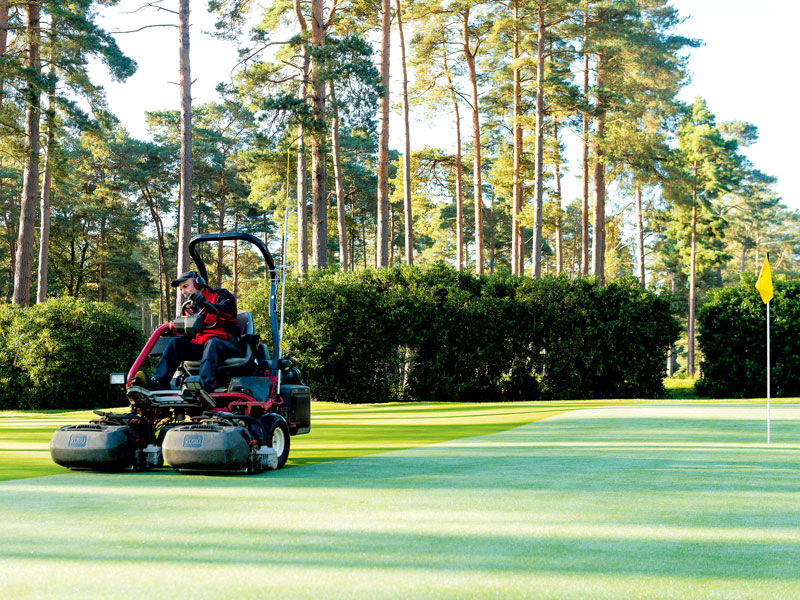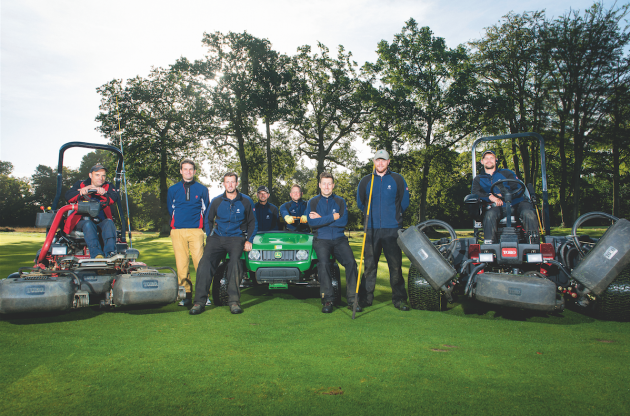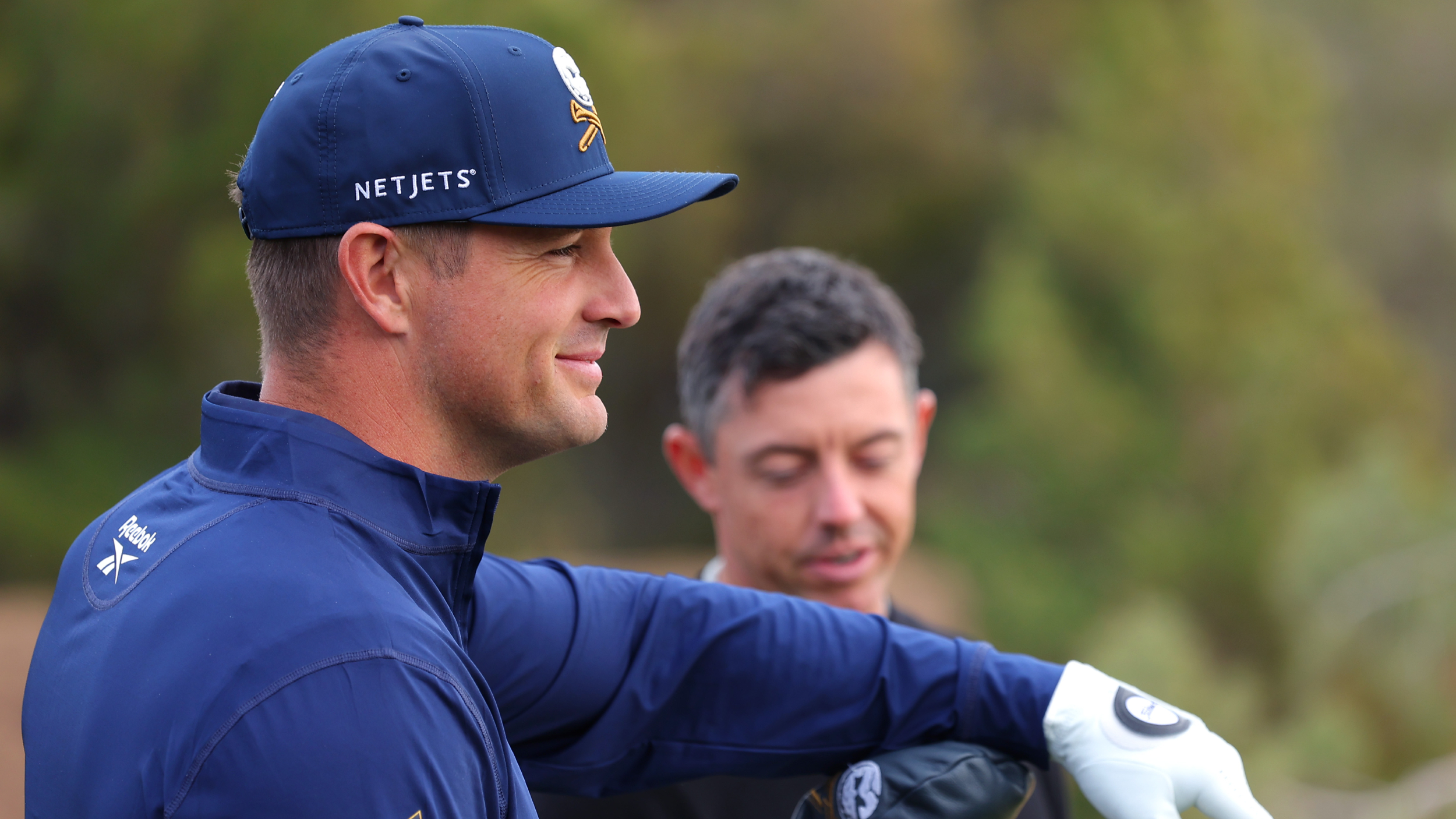The Life Of A Modern Day Greenkeeper
Jeremy Ellwood spent a morning on the fairways at West Hill in Surrey with course manager, Ben Edwards

Much hard work goes on during the year to keep our courses in tip-top shape. Jeremy Ellwood spent a morning on the fairways at West Hill in Surrey with course manager, Ben Edwards, to find out more…
The Life Of A Modern Day Greenkeeper
We all turn up at the club every week expecting everything to be just so, often forgetting what goes in to making our courses such lovely places to play. Some of this hard work goes unnoticed, of course, as much greenkeeping takes place unseen, while many of us are still in the land of nod.
To find out more about the greenkeeping year, I spent a morning out on West Hill’s beautiful heathland course in Surrey with course manager, Ben Edwards, and his hard-working team. I have to be honest, Ben looked a tad young to be in charge.
“When I left school I didn’t really have a great idea as to what I wanted to do,” Ben explains.

“I decided to go to Florida to work for three months – not in golf, but I started playing golf, and became quite passionate about it. I came back, applied for a greenkeeping role at Sand Martins Golf Club in Berkshire with no experience, and got the job as a trainee. Within 18 months, I was offered the deputy course manager’s job when I was only 20. From there, I was fortunate that my boss went back to New Zealand to be a course manager, and I got offered the course manager’s job when I was 23.”
The 10 best inland golf courses in the UK
Get the Golf Monthly Newsletter
Subscribe to the Golf Monthly newsletter to stay up to date with all the latest tour news, equipment news, reviews, head-to-heads and buyer’s guides from our team of experienced experts.
I ask if there are many 23-year-old course managers. “I wouldn’t think so!” Ben smiles. “I was very young and a bit worried, as you would be being that young, but I just went from there. I was there for ten years – six as course manager – then this job came up. I’m 35 now, so still pretty young.”

Ben heads up a team of nine at West Hill, all either qualified or studying for qualifications. “I like all the staff to be able to do everything, because if someone’s on holiday, I need someone to be able to do that job,” Ben explains.
“A long time ago you might have had someone who cuts the greens and that’s it, but that’s not the way we like to do it.”
A typical mid-season day sees everyone arrive 15 to 20 minutes before 6am for tea and to get ready for a working day that ends around 2pm.

“Normally two or three of the lads sit in with me in the office to run through what we’re going to be doing and what the aims are for the day,” Ben tells me.
“My deputy, Matt, then hands the morning jobs out to the guys. The afternoon all depends on how the morning pans out and what we’ve got on.”
When big tournaments such as West Hill’s famous Father and Son arrive, there is scope for overtime as many eyes will be consciously or subconsciously scrutinising every detail.

“There’s lots of strimming to do around the heather areas, and lots of general maintenance that you can’t do every day,” Ben says.
West Hill Golf Club Course Review
“When you have a Pro-Am or the club championship, you want it all spot on, so you might double-cut the greens or roll things a bit more.”
We turn to the old chestnut of green speeds. I suggest that they must have to be careful here because of the slopes. “If they are silly quick you’d make them pretty miserable to play on,” Ben agrees.

“But they do like the greens to be running true and fast here so we try to keep them at a nice pace – generally between nine and ten. You can feel pressurised into doing things, but it’s not healthy for the greens and their sustainability.”
Golf Monthly UK&I Top 100 Courses
Every golfer will at some stage have turned up to find major work going on which impacts heavily on playing conditions. Thankfully, golfer/greenkeeper communications are better these days, certainly at West Hill.
“We do communicate well to the members, and our secretary is very good at that,” Ben says.

“We’ll have discussions on the greens committee about what we’re doing and when we need to do it, they relay it on to the club, and the secretary will email the members. So they are well informed and don’t just turn up in August to find 18 greens out and hollow cores everywhere.”
It seems the greenkeeper’s lot is now a much more professional one, full stop.
“Long gone are the days when greenkeepers couldn’t go into the clubhouse,” Ben smiles.
“We’re a little bit more respected now. I go to the Superintendents Show – as they call it – in America every year, and it really opens your eyes. They are always very smart, very professional and very proud of what they do. When I started greenkeeping 15 years ago, I used to go to our show in Harrogate, and it used to be quite a bit different to how it is now! It’s very professional these days. I’m proud of my team and the work they do.”
Make sure you follow Golf Monthly on Facebook, Twitter and Instagram
-
 ‘You Kinda Did It To Yourself’ – When Bryson DeChambeau Needled Rory McIlroy Over US Open Battle
‘You Kinda Did It To Yourself’ – When Bryson DeChambeau Needled Rory McIlroy Over US Open BattleMonths after Bryson DeChambeau’s defeat of Rory McIlroy in the US Open, the two met in Las Vegas, where the LIV Golfer had a lightning-quick response to a humorous comment from his rival
By Mike Hall Published
-
 If Bryson DeChambeau Wins The Masters Today, Will He Eclipse Scottie Scheffler As Golf's Shining Star?
If Bryson DeChambeau Wins The Masters Today, Will He Eclipse Scottie Scheffler As Golf's Shining Star?Bryson DeChambeau heads into the final round at The Masters with a chance to win a third Major, which I believe would firmly cement him as golf's new poster boy
By Barry Plummer Published